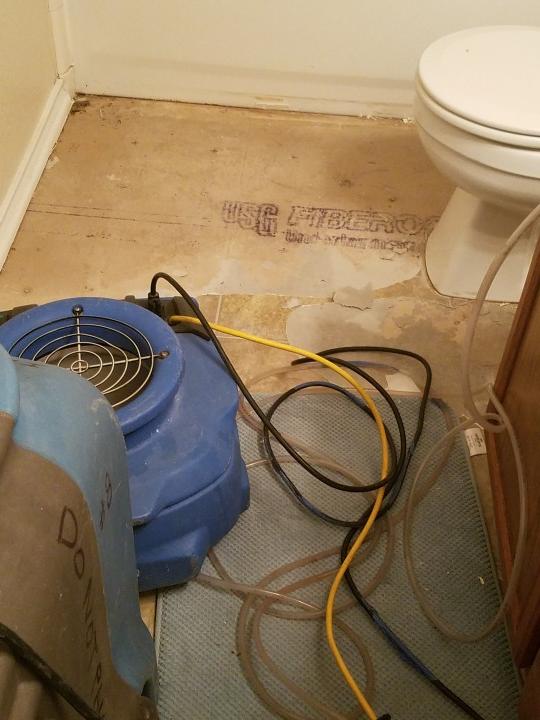Flooded Bathroom? Here’s What to Do Before Calling for Help
08/27/2025

Why Bathroom Floods Are Especially Dangerous
Bathrooms are among the most common rooms to flood—and also among the most hazardous. Water doesn’t just damage floors and walls; it can seep beneath tile, into drywall, and behind cabinets, creating hidden problems. If left untreated, standing water leads to mold, bacteria growth, and structural issues.
Common causes of bathroom flooding include:
-
Overflowing toilets or tubs – A quick clog or forgotten faucet can send gallons of water onto the floor.
-
Burst or leaking pipes – Sudden pipe breaks release pressurized water into tight spaces.
-
Stormwater intrusion – Heavy rains and hurricanes can push water indoors, overwhelming drains.
Understanding these risks highlights why acting quickly is critical.
Step 1: Shut Off the Water and Power
-
Turn off the water supply at the fixture or the home’s main shut-off valve to stop the flow.
-
Cut electricity to the bathroom at the breaker panel if water is near outlets, lights, or wiring. Safety first—never enter standing water if electrical hazards are possible.
Step 2: Remove Excess Water
-
Mop and Towels – Press down firmly with towels to soak up water, swapping them out as they saturate.
-
Wet/Dry Vacuum – A shop vacuum is ideal for pulling water out of cracks, corners, and flooring.
-
Contain the Flooding – Use towels or barriers at doorways to keep water from spreading to other rooms.
Step 3: Improve Airflow and Ventilation
-
Open windows and doors if outside air is drier.
-
Use fans to move dry air across wet surfaces.
-
Turn on exhaust fans in the bathroom if safe to do so, to help pull moisture out.
Step 4: Control Humidity Inside
Moist air makes drying slower and encourages mold. Combat it by:
-
Running a dehumidifier in the bathroom.
-
Turning on your air conditioner to reduce indoor humidity.
-
Keeping the bathroom door shut to concentrate drying efforts.
Step 5: Clean and Disinfect Surfaces
Floodwater often carries bacteria. To protect your health:
-
Wear gloves and protective footwear when cleaning.
-
Wipe down and disinfect hard surfaces with a safe cleaning solution.
-
Remove items stored under sinks or in cabinets, as these areas trap moisture.
Step 6: Protect Against Mold
Mold can begin growing within 24–48 hours after water damage. To prevent it:
-
Pull up baseboards or edges of flooring if possible, allowing air to circulate underneath.
-
Apply a mold-preventive spray or a mild vinegar solution to damp areas.
-
Replace materials like soaked carpet or padding if contaminated, as they rarely dry thoroughly.
Step 7: Call Professionals for Serious Flooding
Sometimes DIY isn’t enough—especially if water is deep, contaminated, or widespread. Professional water damage experts like CC Water Extraction bring:
-
High-powered extraction and drying equipment
-
Moisture detection tools to find hidden water
-
Antimicrobial treatments to stop mold before it spreads
This can mean the difference between saving your bathroom or facing costly long-term repairs.
Key Takeaways
-
Act quickly—the first 24–48 hours are critical.
-
Shut off water and power before entering a flooded bathroom.
-
Combine water removal, airflow, humidity control, and disinfection for the best results.
-
Don’t wait—if flooding is severe or unsafe, call CC Water Extraction immediately.
Pro Tip: Always document the damage with photos and contact your insurance provider early—especially if the cause is a burst pipe or stormwater intrusion.
Need Emergency Bathroom Flood Cleanup?
Water damage spreads quickly—don’t let a small flood turn into a big problem. If your bathroom is flooded from a burst pipe, toilet overflow, or storm damage, call CC Water Extraction for 24/7 emergency service. Fast action can save your home, prevent mold, and give you peace of mind.


